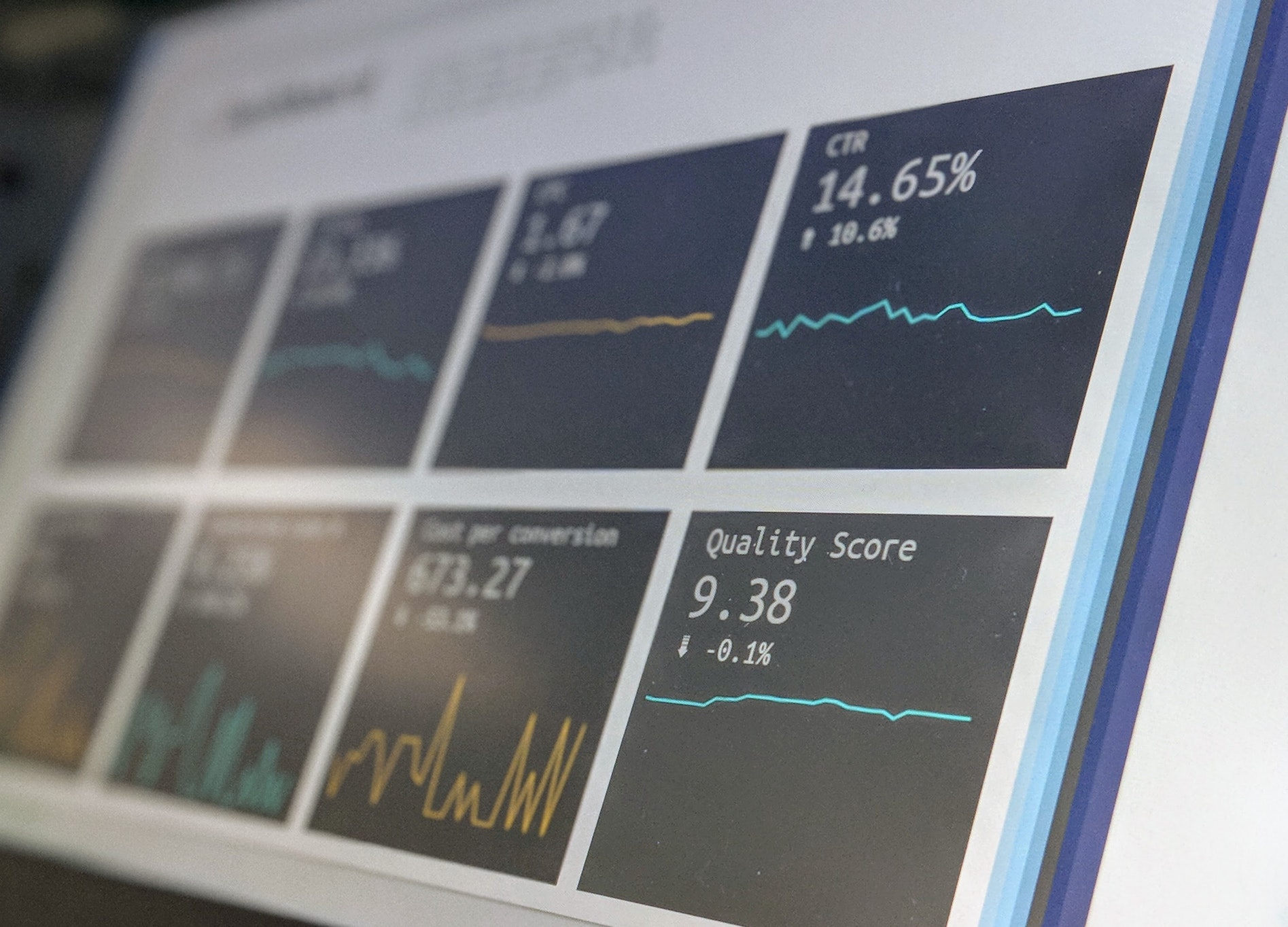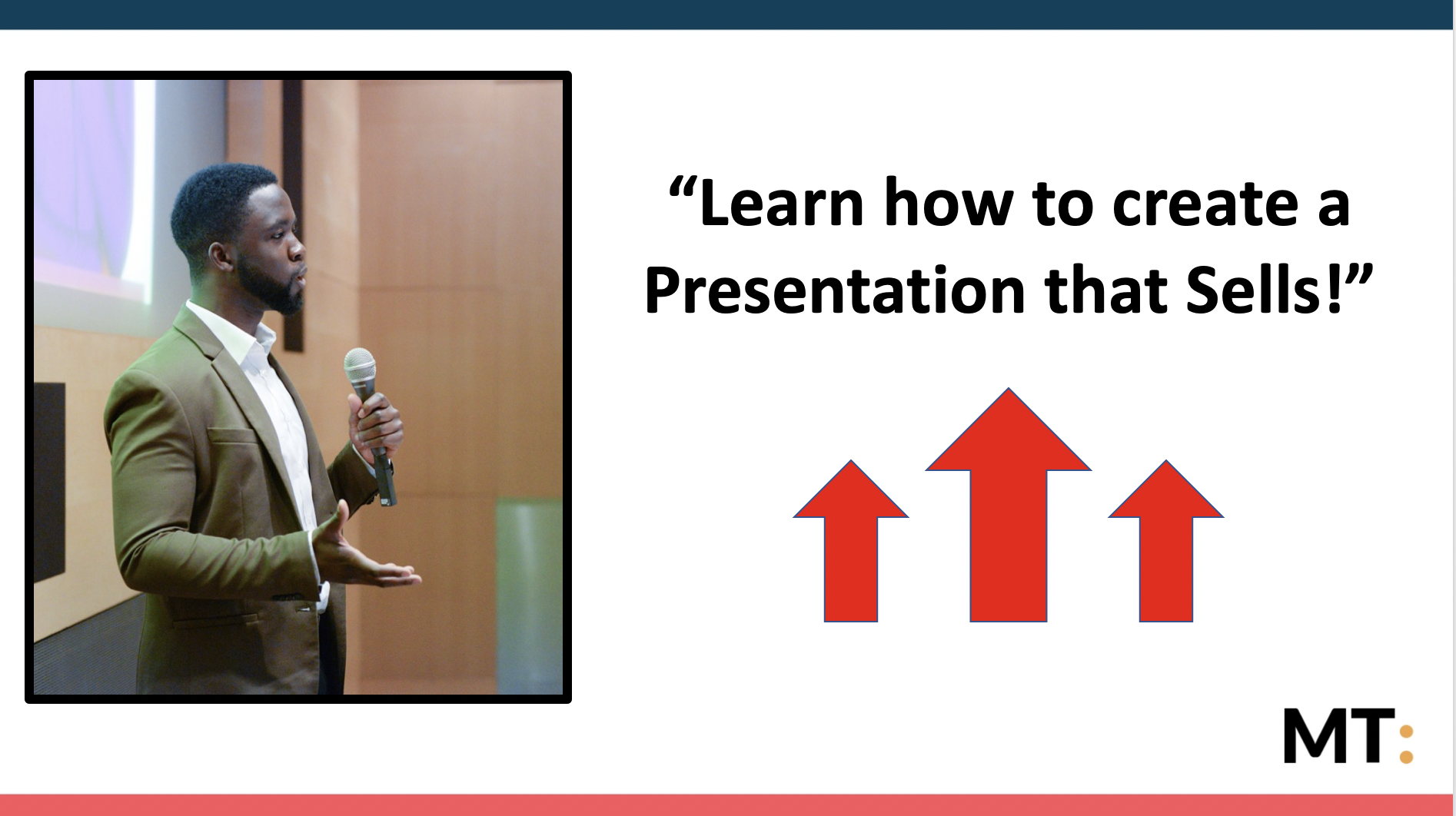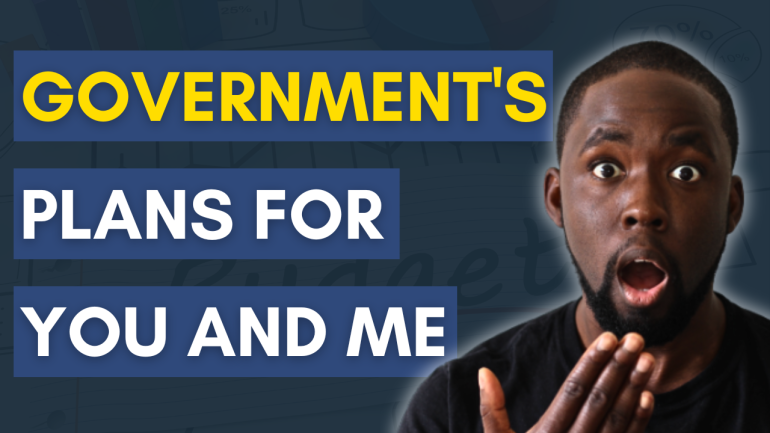How to Create a Powerpoint Presentation That Sells
As a Personal Brand, it’s important that you create a powerpoint presentation that sells. This means creating a signature talk around a niche topic, that sells a product or service at the end of it. If you think about it, a signature talk or a powerpoint presentation is the basis of your business. All your content is based on this presentation, as it supports what is being said. A signature talk is key because it establishes you as an expert. This can be online or on stage. It also allows people to begin to build rapport with you faster. In this article, I’m going to break down what your presentation should consist of. All this information is a combination of courses, events, online presentations and experience that I have had over the years.
Creating a signature talk requires you to position your audience, present your content, and promote your product or service.
Position

This first section is all about making sure you position your audience for the presentation. It is about making sure that they know why they are present. Of course, it is to learn something new, but ultimately it’s about helping them solve their problems. Positioning is also important because it allows you to know whether you have done your job properly. Here are some things to think about when producing the structure for your presentation.
Title
Create an eye-grabbing title that has your picture on it, and the topic of your presentation. This topic usually starts off with a “How to…” If you have attendees watching your presentation because of an Ad, it needs to be congruent with the original promise. Keep it nice and simple, but grab the attention of your attendees. Use titles talk about the desired outcomes, whilst also addressing the problem. For example:
“How to boldly overcome the fear of public speaking without wetting your pants each time you stage!”
Ask questions

You want to ask questions that validate the presence of your audience. These questions should be related to a problem they want to be solved. For example:
- “Who is here because they are struggling to attract clients?”
- “Who is here because they find it difficult to shed some weight?”
- “How many of you want to make more money from public speaking?”
Don’t ask too many questions, but breaking up the presentation with 1 – 2 questions is always good to know where you stand. It can provide you with a sense of confidence. Or a sense that you need to make changes for the future.
Position their mindset
It’s always great when you can give your audience something they can carry with them throughout the presentation. It must a belief or idea that resonates with them from the start. It can relate to a belief that you think they must in order to be successful in their endeavours. I would write some belief systems you have about success, and throw them into the presentation. Here’s an example:
I believe that everyone has the opportunity to be successful. But it starts with honesty. Be as honest to yourself, and others, so that you have the freedom and genuine desire to excel with your goals.
Add testimonials

You also want to sprinkle in some testimonials that highlight how you have helped people in the past. If you don’t have any testimonials, I would do some work for free and get some, or leave it out. Testimonials can be a collection of videos, screenshots and written text. A good practice is to have testimonials that have the name, title and statement made by the person. Additional things like pictures and videos always help. Testimonials serve as a way to create quickened trust between you and your audience. People love to see a review before they invest into anything.
Tell your story
It’s time to tell your story. I have spoken about this in some detail in my public speaking article, but essentially you need to use the structure:
- Shock – start off by what you set out to do and the many challenges you incurred
- Summit – described how you realised that things needed to change
- Success – state the action you took to get better results
This is a great way to relate with your audience and show them you understand what they are going through.
Give some facts

Although facts tell, and stories sell, it’s important to highlight some statistics. This is because it makes you sound smart. Simple. The other reason is that it’s potentially new information for the audience to process, which helps to position you as the expert. Think of some marco and micro facts that relate to your niche and audience.
Settle the score
So that you are not wasting your time, be very clear about who you want on the presentation and who you don’t want. At the end of the day, we are aiming for quality customers and not people who are wasting your time. Likewise, it’s important to let people know that you are serious, and you want a commitment from people. Give people a visual that contrasts the difference and make it clear. You also want to tell people who this is for, i.e. listing all the different types of people in your audience. Here’s an example:
- This for people who are
- …learning how to manage their diet
- …wanting to lose body fat
- …not knowing what exercises to use
- …want to live a healthier lifestyle
- …post-pregnant mothers who don’t have the time to workout
Either highlight the pains, desired outcomes, or roles that fit your audience.
Present

It’s now time to give them some real content. First, you want to list out what you will be teaching them. This is typically anywhere between 3 – 6 items, however, do not overdo it! Your presentation in total is likely to be anywhere between 45 – 180 mins. Give people the following information:
- Foundational concepts taught in a new way
- New information they have never heard
- A walkthrough of what used to be, and what is
These are great ways to provide content to your attendees and keep them awake. In addition, you want to continue to ask them questions to get “micro-commitments” from them. In other words, ask questions that get them to agree, or say yes to your questions. Of course, don’t force it, but make the questions as natural as possible. There are too make “gurus” who engineer these ques in an awkward and cringe-worthy manner. Be You. Close the present section by reminding people of what they had just learned.
Promote

It’s now time to start promoting your offer to your attendees. Although this is a scary thought, it’s done in a way that shouldn’t feel scary. Without this bit, you won’t make money, and a smooth transition is required for you to do this well.
Give them options
Now it’s time to present two options to your audience. But first, you need to confirm that they have enjoyed the presentation. You can tell them that they can go away and implement what they have learned, or they can accelerate the process with your help. Furthermore, you also need to ask them if they are ok with you presenting something that may benefit them. If you have done your job well, you’ll get a percentage of your audience intrigued to want to know more. And you’ll also get a percentage of your audience who wants to buy now!
Show your products or service

Show them your offer as a picture. This could be a book, DVD series, documents, or anything that appropriately displays your product or service. After this bit, you also must show them the features on the slide, and explain each one to them. They need to be fully informed of what they will get, and how it will help them. This is where you can show testimonials, and examples of it working to edify your services even more. Moreover, you want to continue to show different features and bonuses you are offering for the product or service you are promoting.
Show the value

Each time you show a feature or bonus, you must highlight the proposed value of the product. There are different ways to come to this value and they include:
- What the market currently dictates for this value
- What the rate dictates for this value
It really is up to you, and there is no written rule, but you must consider the time, effort and resources put into creating these features. In the industry, this is known as stacking the value. As I see it, you should be able to sell each feature or bonus separately for the price presented.
Rinse and Repeat
Repeat the last 2 subsections on showing your product or service, and showing your value. You can mix it up a little here, but too be honest you want to keep it simple. It may seem repetitive but it serves a very important purpose. The audience needs to see what they could be getting. And some of the savvier participants will know there will be a huge price drop!
Final stack
Reveal the total value of all the features and bonuses presented. This may make people feel a little sick as the value will look very high in some cases, but many in the audience will create arguments to justify why it is a good price.
Give them reasons to buy

This is about tapping into their original reason for joining you on this presentation. You want to speak to their ultimate desired outcomes and pose questions that force them to think about what they really want. What if questions work really well such as:
- What if you were one exercise away from that summer body?
- What if you were one meal plan away from losing 10Kg?
- What if you were one course away from living a supremely healthy lifestyle?
I’m sure you get the picture? Paint a very real possibility for them, without fabricating any possible desire outcomes. Also, you may want to highlight a 30-day money back guarantee to create a level of security in the minds of your prospects.
Reveal the discounted price
They’ve waited this whole time for you to reveal the price. And now they are waiting for it. You want to tell them why you are doing it for the price you are doing at. This may be because:
- You want to make it affordable
- You only want very serious clients
- You want testimonials or want a test group
These are all valid reasons. Just be honest with them, and when you are ready, reveal the price… The price difference can be anywhere between 5-10+ bigger than the original price on the final stack. For example, your total value may have come to £5,989.00 but the actual price may come to £500.
Show them where and how to buy

Show your attendees where they can purchase your product or service, and how they can do it. Make it extremely clear for them and don’t underestimate anything. You want to make sure you test your payment process, ensuring all links and integrations work. I would test payments using a test API key and then a real API key if you are using PayPal or Stripe. Follow your online platforms integration instructions for further clarification.
Give the king’s speech
Finally, you want to give a compelling speech that connects with their hearts. Give them scenarios that illustrate that their old way of working clearly doesn’t work and that trying something else may do. Of course, you have shown evidence that it has been trialled and tested and could be a great fit for them. Talking about the bigger picture in these situations always helps, and creates a perspective for your audience. This is also the time to answer any questions, to debunk myths, and create clarity. Spend as long as you like on this bit. You may even want to find a list of questions you may be asked, to prepare adequately for the FAQs.
In summary
A signature talk is key for delivering a presentation that sells. When you include the right elements, you are able to naturally guide your attendees into paying customers. Rather than thinking about the money, think about the quality of your presentation, what you have on offer, and the price point. You should really think about the last two first. Then I would create the presentation on powerpoint and practice it. And finally, I may actually create the majority of the product or service, after I get sales. At least that way I know people want it! Go and create a compelling presentation that positions you as a profitable expert.









One Comment
Comments are closed.